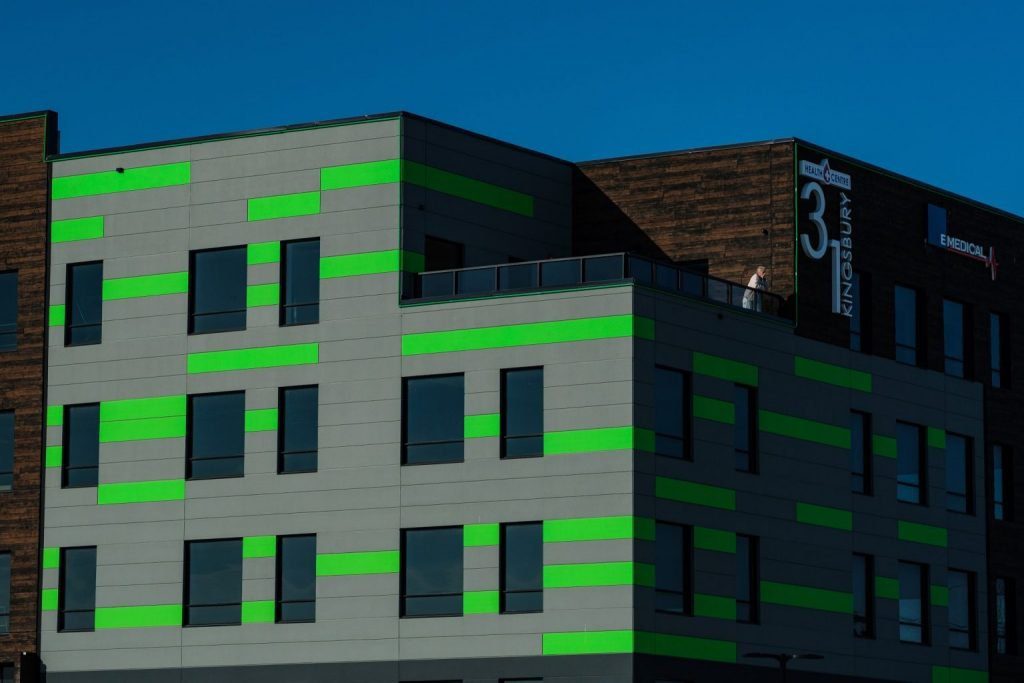Concrete Coatings: What Are they and How do They Work?
While there’s an inherent beauty in fair-faced concrete, many people want to swap out the classic grey look for something a little more colorful.
Your first thought might be to go for paint. But with the advancement of decorative architectural concrete finishes, there are certainly many more options than just paint!
There are a host of different coatings for concrete that range from standard paints & stains all the way out to architectural finishes that evoke a wide variety of colors, shades, or textures.
Here’s what you need to know about utilizing concrete coatings for your next project.
Concrete Coating Options
Concrete, like many other surfaces, is often covered with a standard paint made from bonding materials such as silicon. However, unlike drywall and other indoor surfaces, coating concrete with paint comes with drawbacks that by all means need addressing. This is particularly true if you are working with exterior surfaces in cold climates.
Concrete is generally porous. That means that while the surface may at first appear flat, the rough texture of concrete creates many miniature divots, tunnels, and root-like structures. Many paints cover these tunnels and seal in moisture, which can create a major issue during the changing seasons. Cooler temperatures can expand & freeze water within the concrete, causing cracks and compromising the integrity of the structure.
This is why staining concrete is a better solution for most projects.
The Chemistry of Stain
Paints merely coat the surface of a material. Concrete stain utilizes a mixture of pigments and bonding agents that cover the surface, penetrate it, and form a chemical bond with it. The concrete surface in this instance would be a “substrate,” and it’s essential that coatings bond with the substrate. Stains can be functional, decorative, or both—and cover part of or all of a surface in their application.
Chemical reactions between the substrate and the bonding agents within concrete stain are what causes the coating to bind deep into a surface on a molecular level. This is why coatings are perfect for longevity—and why you don’t have to worry about them peeling off like paint.
If you’d like to know more about this process, check out our detailed guide.
The Results of Effective Concrete Stain
While concrete stain may not sound very attractive straightaway, the looks achievable can be stunning. Using Nawkaw products and projects as an example, you can see that what used to be a dull, grey concrete building is now adorned with a wood grain finish alongside bright green accents and a cool gray color scheme:

If you’re looking for a more natural look, you can use concrete stain to turn dull precast concrete slabs into warm and welcoming wood panels.

Another surprising use for chemical coatings is in restoration projects. Many historical buildings suffer the effects of pollution, grime, and other flaws, which in turn leaves them looking worse for wear. By using a number of different treatments, including a concrete stain, historical buildings regain their former glory in most cases.
Stains aren’t just limited to concrete. Stains can transform masonry and residential houses too, which goes to show just what a versatile solution staining is for concrete masonry, and similar building materials.
Final Thoughts
If you’re looking for a solution that you can be proud of, a vivid concrete stain might be just what you’re looking for–especially if you’re looking to avoid the maintenance associated with the upkeep of painted exteriors.
For more information or a free consultation, you can always get in touch with us and Nawkaw can put together a tailor-made solution for your building.

